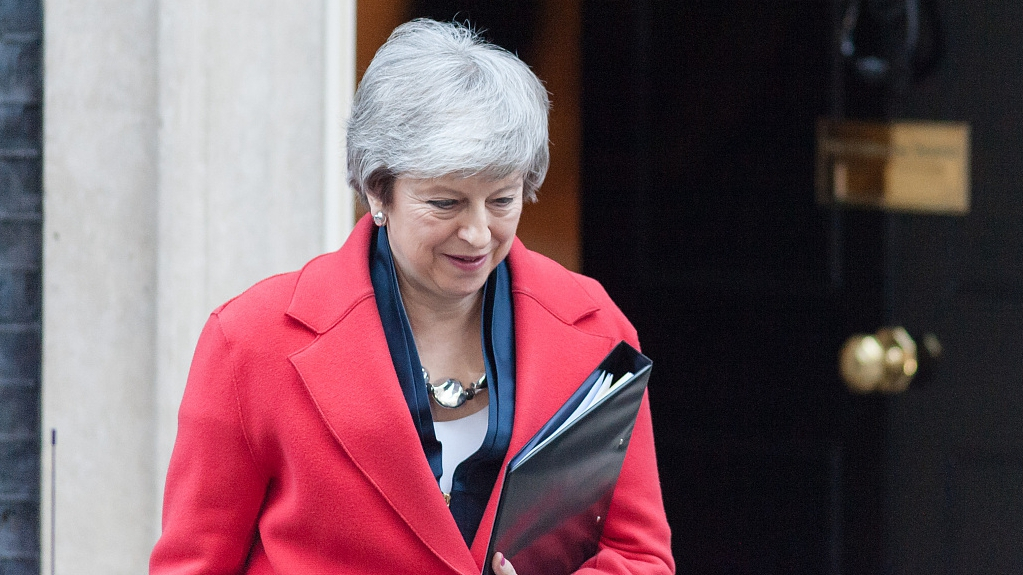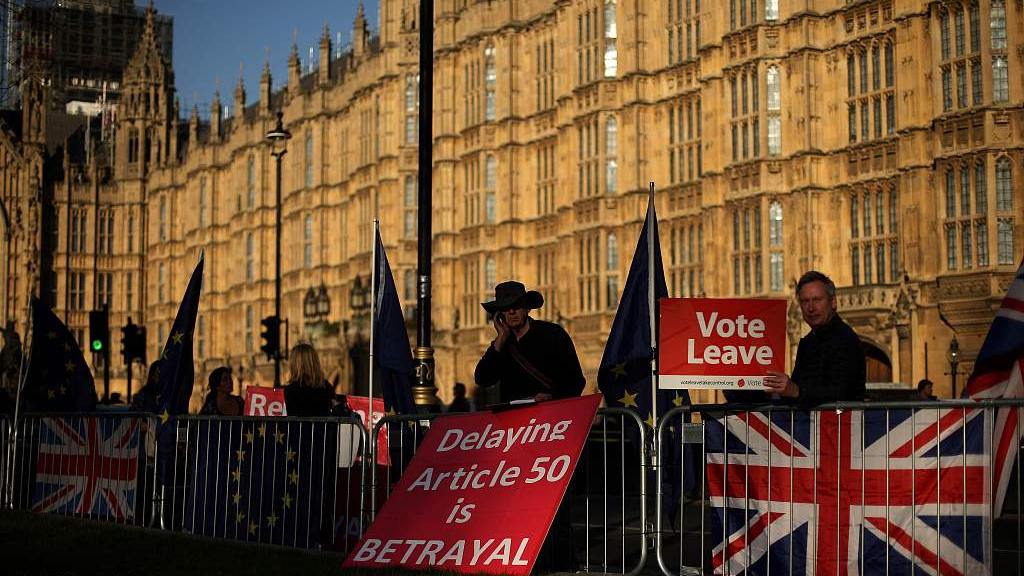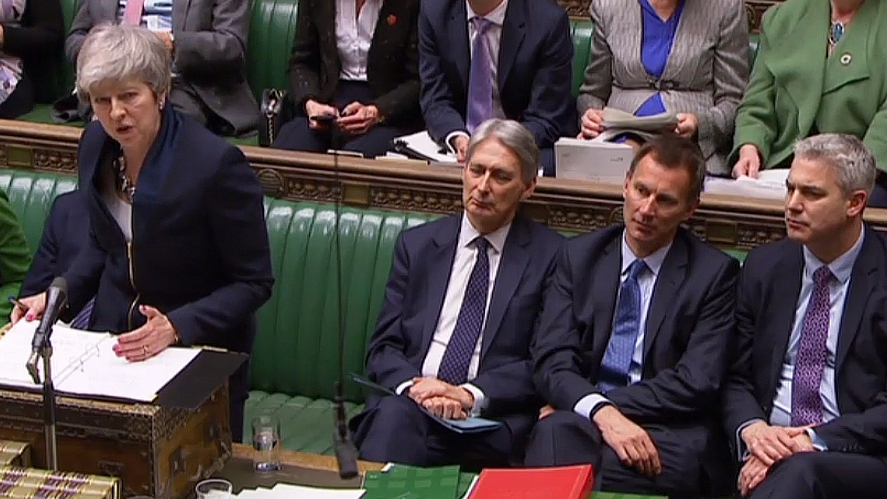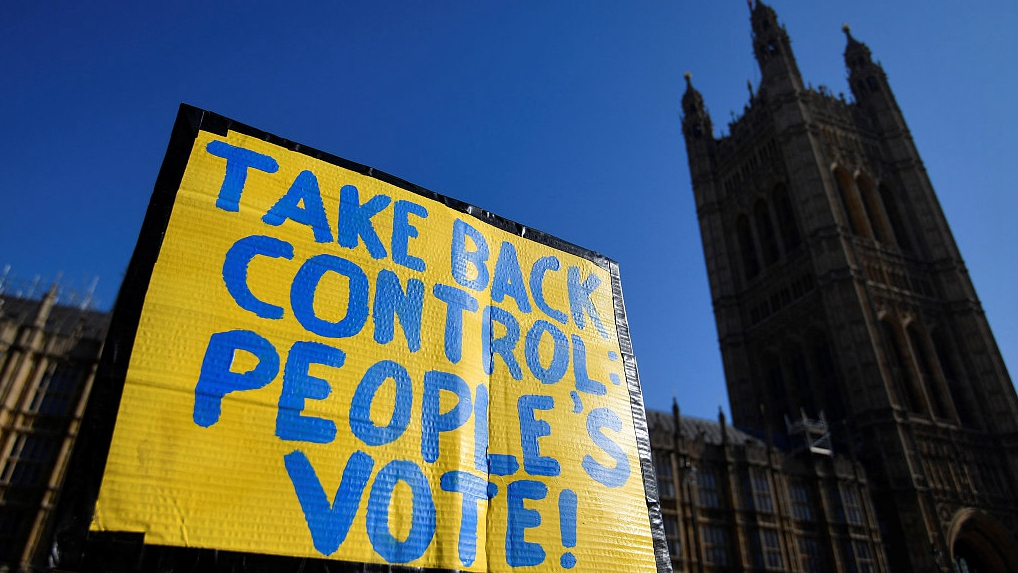
Europe
19:02, 27-Feb-2019
May spikes day of danger, sets up dramatic Brexit votes in March
By John Goodrich

In the long and drawn out story of Brexit, many "crunch" moments have been and gone without a great deal actually changing.
Wednesday is a little different. It was shaping up to be dramatic, and now it probably won't be – yet suddenly, over the past week, the tectonic plates of Brexit have shifted significantly.
Read more:
Both the Conservatives and Labour are split on Brexit, dissuading leaders from following the mantra "to govern is to choose" for fear that a decision would break their respective parties.
But a series of forces have come to a head, pushing Prime Minister Theresa May and Labour leader Jeremy Corbyn to step off the fence and make uncomfortable choices.
May, faced with a disintegrating government, has for the first time acknowledged that a delay to Brexit may take place and agreed to a vote which will all but rules out a no-deal exit on March 29.
Corbyn, rocked by the resignations of eight pro-European MPs last week, has moved toward making a second referendum party policy as a means of heading off a larger split.
Three stages, one matters
May on Tuesday promised to hold a three-stage vote: First on her deal, and if that is defeated on a no-deal, and if that is defeated on a "short limited delay."
But it is not quite as advertised. Her proposal is effectively only a choice between her deal and delay.
- If MPs vote for May's deal by March 12, Britain will leave the EU on those terms (though possibly with a short delay to give time for legislation to be passed).
- If MPs vote against her deal, the next vote will be on a no-deal – but parliament has already opposed this and will unquestionably do so again.
- The third vote would also seem to be a foregone conclusion: If it's no to May's deal and no to no-deal with two weeks to scheduled exit, there'll be little option but to request a delay – though that would have to be accepted by the EU.
- If MPs did vote against a delay, it's unclear what would happen – most likely a reversion to the current law that Britain would leave the EU without a deal on March 29.

Pro-Brexit activists hold placards as they demonstrate outside the Houses of Parliament in London, February 26, 2019. /VCG Photo
Pro-Brexit activists hold placards as they demonstrate outside the Houses of Parliament in London, February 26, 2019. /VCG Photo
The prime minister was forced into making the concessions because an amendment by which a similar scenario would play out was due to be voted on in the House of Commons on Wednesday – and several ministers had indicated they would quit the government to support it.
That amendment would also have seen parliament take control away from the executive – an uncertain path May was determined to block. By changing tack, she has – for now – retained control of the process and probably kept her government together, if not united.

Britain's Prime Minister Theresa May makes a statement to the House of Commons in London, February 26, 2019. /VCG Photo
Britain's Prime Minister Theresa May makes a statement to the House of Commons in London, February 26, 2019. /VCG Photo
The dynamics of the next meaningful vote on her deal – the previous attempt was comprehensively rejected – scheduled to be held by March 12 have also changed.
Whether the prime minister is in a stronger position to win depends on the calculation of the European Research Group (ERG), the hardline pro-Brexit faction of her Conservative Party.
The ERG MPs can no longer reject May's deal in the hope of ultimately leaving without agreement on March 29, so will have to choose between the certainty of an exit they don't like with May's deal or the risks of a short delay.
Anything could happen in the delay period, likely to be three months: A softer Brexit, a referendum or even an election. What the government would hope to achieve hasn't been addressed. But it could also end with a "managed" no-deal – a scenario the ERG would be happy with.
Which option the ERG faction gambles on will be decisive to the future of May's deal.
Labour's shift
The second major shift is in the Labour Party. The decision last week of eight pro-European Labour MPs to quit for The Independent Group (TIG) was decried by the campaign backing a second referendum – they feared it would harden Corbyn's opposition to a new public poll.

A placard showing support for a second referendum outside the Houses of Parliament in London, February 26, 2019. /VCG Photo
A placard showing support for a second referendum outside the Houses of Parliament in London, February 26, 2019. /VCG Photo
In fact, the formation of TIG has forced Labour to back a second referendum if its alternative plan for Brexit is rejected. The leadership feared upward of 50 MPs would resign to join the new group if it did not.
In doing so, assuming it commits, the party has probably prevented an exodus of MPs and reassured its membership in the short term. But it has also created fresh problems for the future, because many of its lawmakers and voters are strongly against a "People's Vote".
What next?
Votes will still be cast on Wednesday evening, though the intrigue has been punctured by May's announcement.
MPs will vote on a motion simply acknowledging the prime minister's statement and that negotiations are ongoing. Amendments to that motion will include an option putting May's promises into writing – there is not complete trust that she will deliver – but that could be accepted by the government without a vote.
There will be a vote on Labour's alternative plan, and further amendments are expected to be proposed on citizen's rights, a second referendum, and – perhaps importantly – ruling out a no-deal at any date.
With a major crisis temporarily averted, May's mission before March 12 is to negotiate concessions with the EU on the Irish backstop that allow her party – and her allies in the Democratic Unionist Party – to back her in a meaningful vote.
If she does not, a delayed Brexit and a fresh period of uncertainty seem inevitable.

SITEMAP
Copyright © 2018 CGTN. Beijing ICP prepared NO.16065310-3
Copyright © 2018 CGTN. Beijing ICP prepared NO.16065310-3